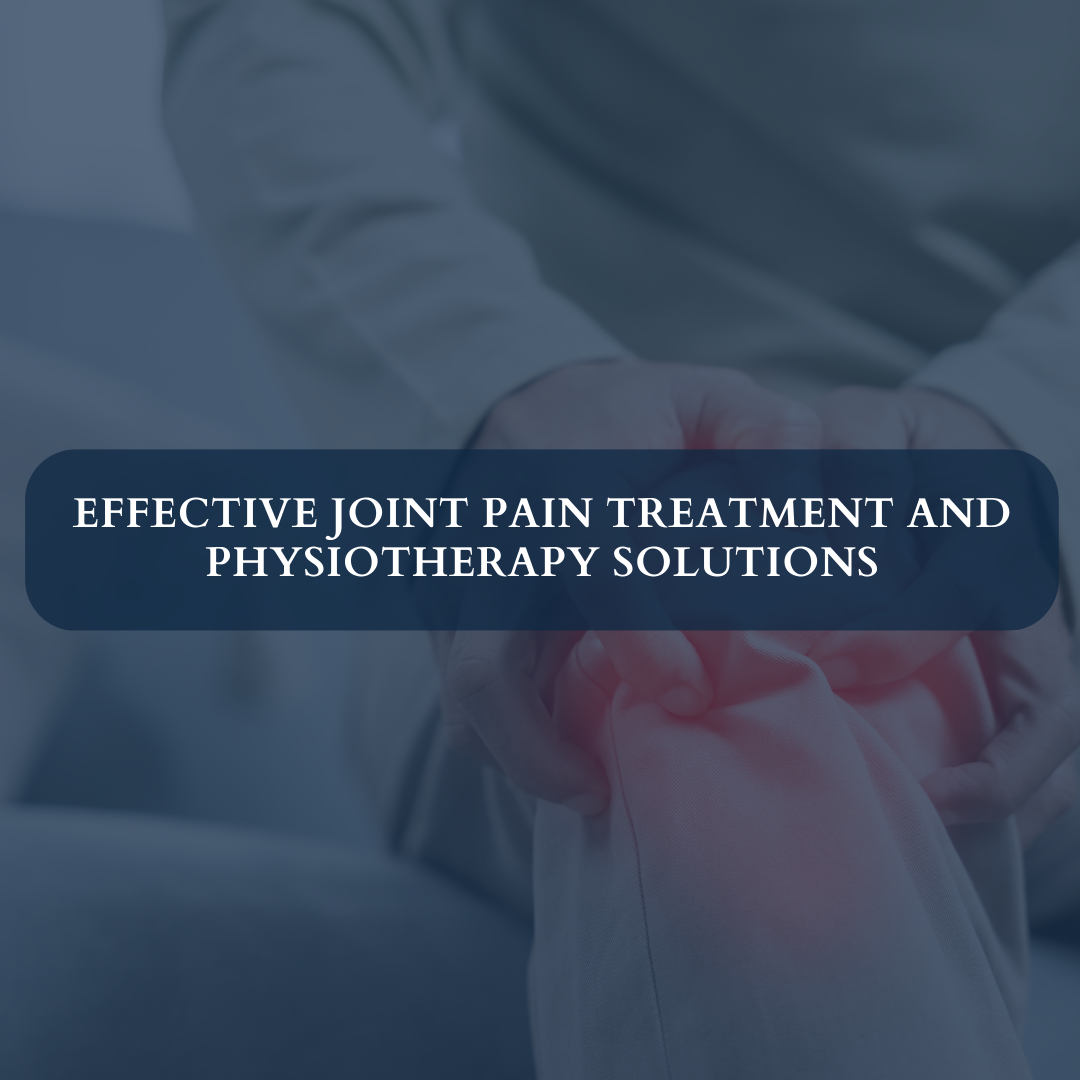Joint pain can be debilitating, impacting your mobility and quality of life. Whether it’s due to aging, injury, or a medical condition like arthritis, finding effective treatment and relief is crucial. While medication can offer temporary relief, a holistic approach that includes physiotherapy can provide long-term solutions to manage and alleviate it. In this comprehensive guide, we’ll explore various joint pain treatment options and the role of physiotherapy in promoting healing and improving joint function.
Understanding Joint Pain
Before delving into treatment options, it’s essential to understand what causes this pain. Joints are where two or more bones meet, allowing for movement and flexibility. When these joints are damaged or inflamed, it can result in pain, stiffness, and swelling. Common causes of joint pain include:
- Arthritis: Osteoarthritis and rheumatoid arthritis are the most common types, causing degeneration of joint cartilage and inflammation.
- Injuries: Sprains, strains, and fractures can damage the joints, leading to pain and limited mobility.
- Overuse: Repetitive motions or excessive strain on joints, commonly seen in athletes or individuals with physically demanding jobs.
Traditional Treatments
Traditionally, It has been treated with medication to manage pain and inflammation. Common medications include nonsteroidal anti-inflammatory drugs (NSAIDs), corticosteroids, and pain relievers. While these medications can provide temporary relief, they often come with side effects and do not address the underlying cause of the pain.
The Role of Physiotherapy in Joint Pain Management
Physiotherapy, also known as physical therapy, focuses on restoring movement and function to the body. It employs a variety of techniques to address it and improve overall mobility. Some benefits of physiotherapy for joint pain include:
- Pain Relief: Physiotherapists use techniques such as manual therapy, ultrasound, and electrical stimulation to reduce pain and inflammation in the joints.
- Improved Mobility: Through targeted exercises and stretches, physiotherapy helps improve joint flexibility and range of motion, allowing for better movement and functionality.
- Strength and Stability: Weak muscles around the joints can exacerbate pain and instability. Physiotherapy includes strength training exercises to strengthen muscles, providing better support to the joints.
- Education and Prevention: Physiotherapists educate patients about proper body mechanics and techniques to prevent future injuries and manage it effectively.
Effective Physiotherapy Techniques
Physiotherapy employs various techniques to address it and promote healing. Some effective techniques include:
- Exercise Therapy: Customized exercise programs tailored to individual needs help strengthen muscles, improve flexibility, and reduce it.
- Manual Therapy: Hands-on techniques such as massage, manipulation, and mobilization help alleviate pain and improve joint function.
- Electrotherapy: Modalities like ultrasound, TENS (transcutaneous electrical nerve stimulation), and laser therapy are used to reduce pain and inflammation in the joints.
- Aquatic Therapy: Water-based exercises in a controlled environment reduce stress on the joints while improving strength and flexibility.
Integrating Physiotherapy into Joint Pain Treatment Plans
When it comes to managing joint pain, a multidisciplinary approach is often the most effective. Combining physiotherapy with other treatments such as medication, injections, and lifestyle modifications can provide comprehensive care and better outcomes for patients. Physiotherapists work closely with other healthcare professionals to develop personalized treatment plans that address the unique needs of each individual.
Conclusion
Joint pain can significantly impact daily life, but effective treatment options are available to alleviate symptoms and improve quality of life. While medication can offer temporary relief, physiotherapy plays a crucial role in promoting healing, restoring function, and preventing future injuries. By incorporating physiotherapy techniques into treatment plans, individuals suffering from it can experience long-term relief and enjoy a more active and pain-free lifestyle. If you’re struggling with it, consider consulting with a physiotherapist to explore personalized treatment options tailored to your needs.
Ready to explore your options for chiropractic and physiotherapy?
Contact SwastyaPhysio today to schedule a consultation and discover the best path to your wellness journey. We’re here to support your health every step of the way
Banaswadi | HBR layout | Kalyan Nagar | Kammanahalli | Horamavu | Hennur
